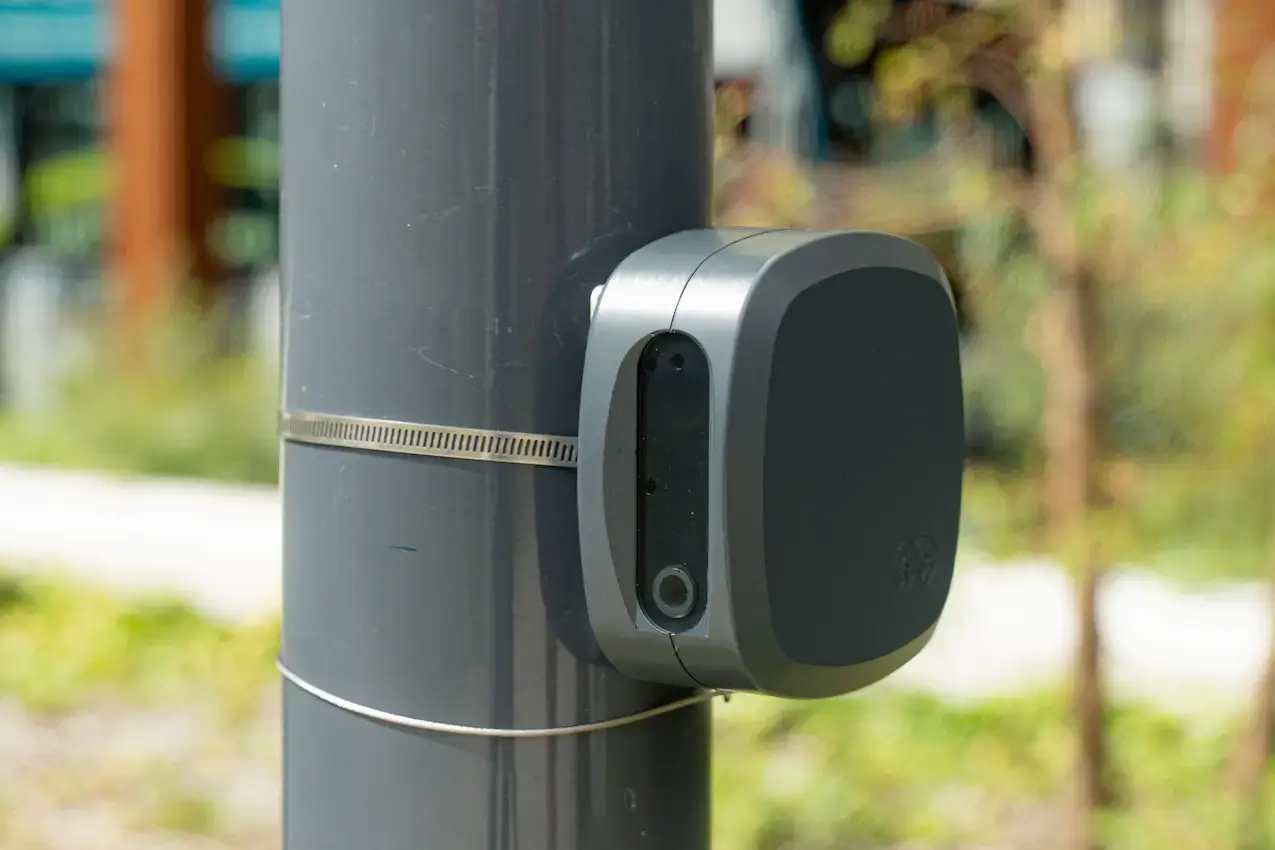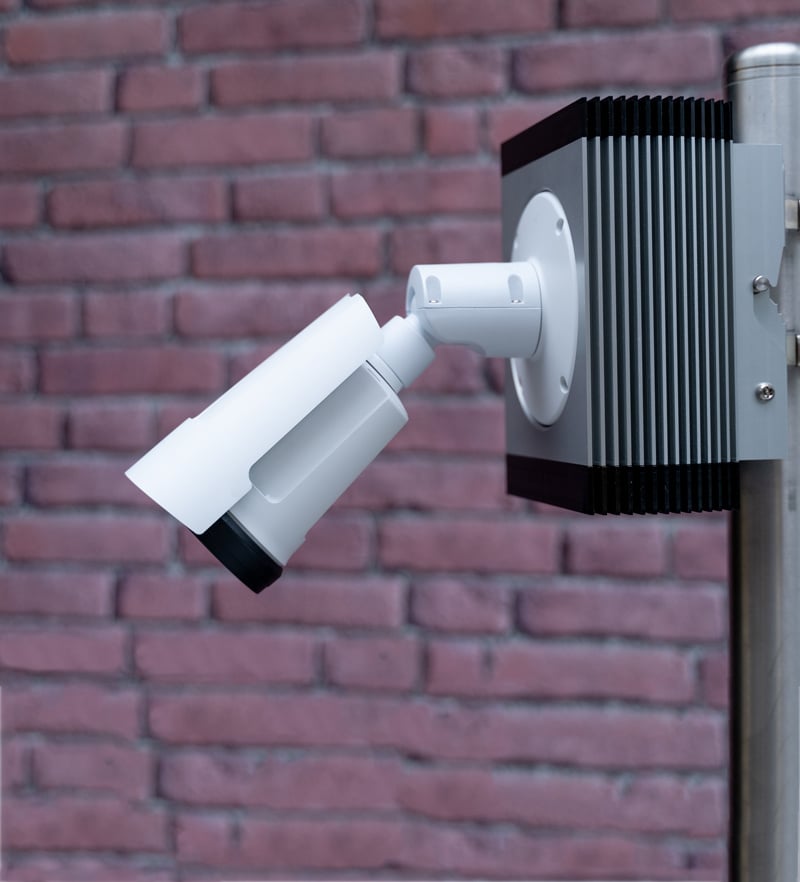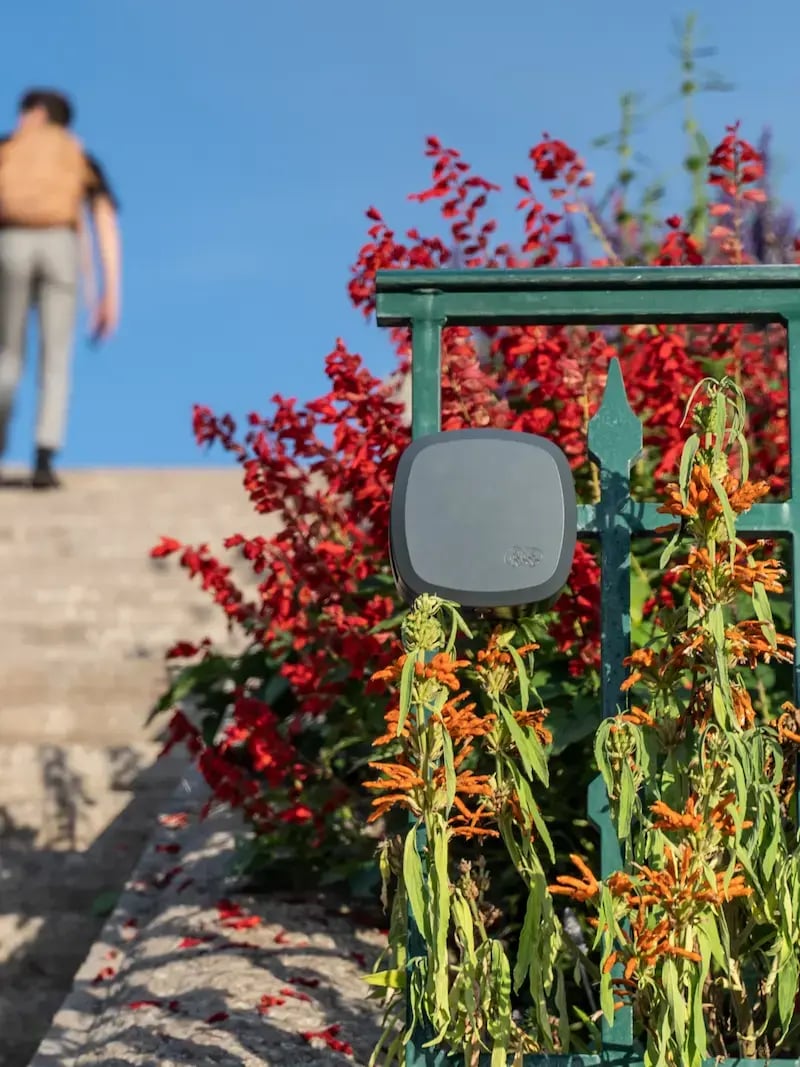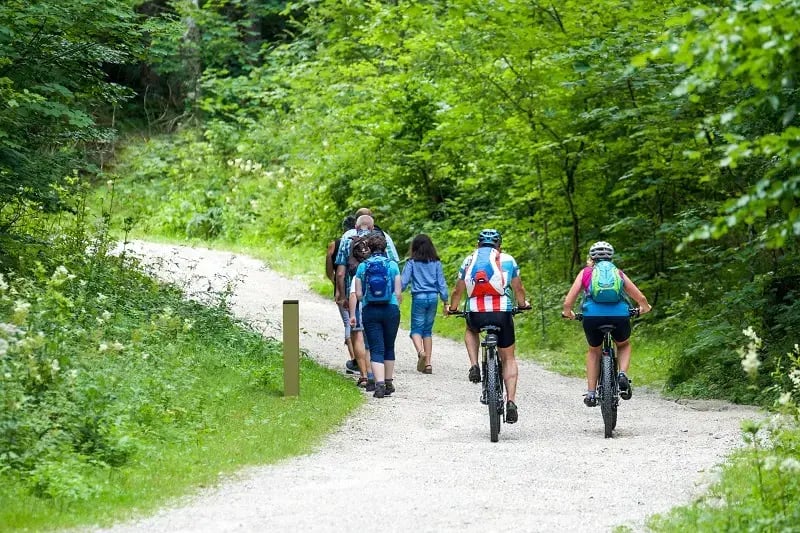1. Check Counter Battery Life

|

|
Check your counters’ battery levels on Eco-Visio and replace batteries before they deplete.
- Before temperatures drop, replace the batteries of your Eco-Counter systems if needed to ensure they last through the winter. Fall and winter counting data is just as important as the spring and summer if you want comprehensive, accurate yearly data and analyses.
- If you live somewhere where snow and ice are commonplace, remember: it is much easier to replace a battery before having to carve it out of a block of ice or frozen ground!
2. Clean Sensors and Lens Holes

|

|

|
Remove debris from lens holes, which can be blocked by dirt or insects in the fall. In the winter, keep lenses clear of ice and snow.
- Dust, debris, dirt, and more can accumulate and cover your Eco-Counter’s sensor in the fall. Clear this away to ensure accurate data collection. If you notice a sensor or lens hole is dirty, use a soft cloth and/or a bottlebrush to keep it clean and dry.
- This also goes for the winter. Regular cleaning prevents the buildup of ice or snow, which could similarly interfere with counts..
3. Inspect and Secure Housing

|

|
Inspect your counter’s housing for signs of aging or damage.
-
Whether your counter is contained in a post, box, or handhole (ex. Rain Bird), have a look at all the screws and closures. It doesn’t hurt to give everything a tightening to guarantee it stays put for the coming fall and winter counting season. Strong winds and icy conditions can loosen or damage poorly secured counters.
-
While you’re at it, look for any signs of wear and tear. This is especially true for wooden posts that have been installed for many years, as real wood can deteriorate naturally over time.
4. Make Sure Handholes Have Dust Caps

|

|
Protect the Torx bolt with a plastic cap.
-
This one is quite specific, but worth mentioning. If your counting system uses a handhole (ex. ZELT Evo), make sure it has its small plastic cap that protects the locking bolt (Torx T45).
-
If this cap isn’t on, the bolt could freeze over in the winter and get completely blocked, making opening the rainbird to service the counter a lengthy and difficult process. Save the headache, put the cap on! If you need a replacement cap, send a message to help@eco-counter.com and we’ll send you one.
5. Clear Surrounding Area

Declutter the counting area so your counter can count properly.
-
Remove branches, leaves, tall grass, and other obstructions around your counter that could block sensors or cause false counts.
-
Especially in windy or snowy conditions, you want to avoid objects tipping or falling over, blocking your counter’s line of sight. This maximizes the accuracy and usefulness of your data. Also, watch out for snowbanks in the winter that can obstruct your counter.
6. Perform a Validation Count

Validate your counter to ensure accurate fall and winter counting.
-
While the weather is still inviting, you should soak up some sunshine and test your Eco-Counters through a validation count. This will alert you right away if a counter is functioning as it’s supposed to, and whether it will continue counting well in the new seasons.
-
To perform a validation count, the basic principle is to manually count passersby and compare it to what the counts show on the Eco-Link app. If you need help with this process, we’ve created a useful step-by-step guide to validating your counts.
7. Prepare for Snow Management

|

|
Adjust your counter’s position if necessary to account for snow.
- Snow on footpaths can pile up. To account for this, pre-emptively raise your Pyro sensors as needed so that the counter continues counting people and not their legs, which could yield inaccurate results. Remember – the lens of the PYRO sensor should be 31.5 inches (80cm) above path level.
- Consider the effects of regular snow removal if your Eco-Counter is located in an area prone to heavy snowfall. If there’s a risk of your counter being damaged during the snow removal process, think about relocating it if possible.
8. Schedule a Maintenance Visit
.webp?width=533&height=400&name=Ile%20Aigles%20-%20entree%20est%20(7).webp)
Get help from Eco-Counter! Our technicians can assist with counter maintenance and training your staff on best practices.
-
Fall is the perfect time to conduct preventive maintenance. If you haven’t already, schedule some time to have a look at your counters.
-
Get in touch with us if you want to get your counters checked by a certified Eco-Counter technician, or if you prefer to have your own team perform the inspection, we’re still available to help over the phone!
Conclusion
Proper preparation is essential to keep your Eco-Counter systems running smoothly throughout fall and winter. By following these ten tips, you can ensure accurate data collection, protect your equipment, and extend the life of your devices. For more details on how we help with maintenance, visit Eco-Counter’s maintenance, installation, & customer support page.
Preparing now means your Eco-Counters can do what they do best—provide precise and reliable data, regardless of the weather.
Need help with your counters? Email us at help@eco-counter.com.








